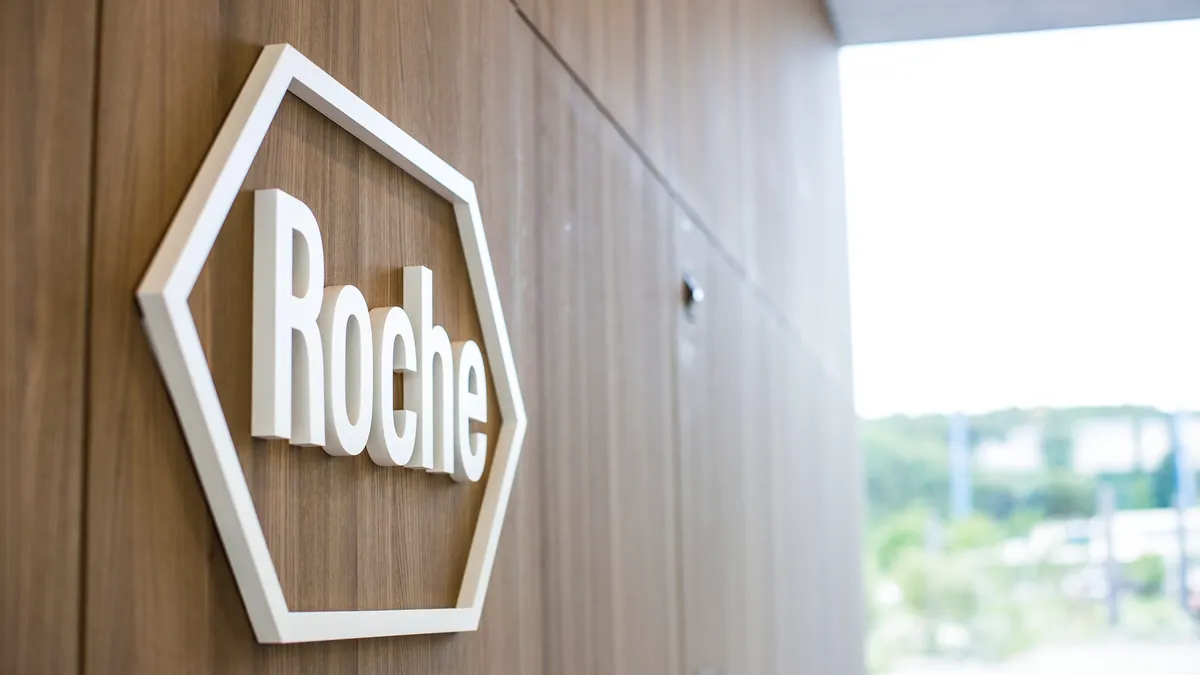Dive Brief:
- The Food and Drug Administration on Friday approved Roche's Susvimo, a first-of-its-kind refillable implant that continuously administers a formulation of the Swiss firm's eye drug Lucentis.
- The FDA has cleared Susivmo for use in adults with the "wet" form of age-related macular degeneration, or AMD, a leading cause of vision loss. The one-time surgical implant is loaded up with the active ingredient in Lucentis and refilled every six months. Roche didn't disclose a price.
- Susvimo is meant to be a convenient alternative to the typical regimen for AMD drugs like Lucentis and Regeneron's market-leading medicine Eylea, each of which require chronic monthly injections. The refillable implant is one of two new Roche treatments, along with the antibody drug faricimab, aimed at lowering the treatment burden on AMD patients.
Dive Insight:
The market for age-related macular degeneration medicines is one of the largest in ophthalmology. Roughly 11 million Americans have some form of AMD, and that number is expected to double by 2050 as the population ages, according to the nonprofit BrightFocus Foundation.
For the past several years, the market has been dominated by Eylea, which generated nearly $5 billion in U.S. sales alone in 2020. Eylea has achieved that dominance despite existing threats like Lucentis and an off-label version of Roche's cancer drug Avastin, as well as the emergence of new drugs like Novartis's Beovu.
But more challengers loom. The drug will soon lose patent protection and is set to face lower-cost competition by mid-next year, with a biosimilar product from Samsung Bioepis and Biogen recently approved by the FDA.
Roche's so-called port delivery system Susvimo has now arrived as well, part of a push by the Swiss drugmaker to improve upon Eylea through regimens that require fewer injections. That effort also includes faricimab, a Roche antibody drug under FDA review.
Gene therapies from RegenXBio and others, designed to provide long-lasting benefit with a single treatment, are also advancing. And Regeneron is fighting back with a high-dose form of Eylea that's meant to be administered once every three or four months.
Susvimo is the first of the group to get to market that only requires two treatments per year. Two hundred and forty-two of the 246 patients who received Susvimo in Roche's Phase 3 study went six months without needing additional treatment and had vision outcomes equal to a separate group of patients who got Lucentis injections. Roche is also testing the drug's effectiveness when refilled once every nine months.
A Phase 3 study in diabetic macular edema, another top indication for Eylea and other drugs like it, is underway as well.
But Roche has a high bar to meet. Eylea has been able to beat back competition before because of a combination of top efficacy and, as SVB Leerink analysts recently wrote, a "gold-standard" track record on safety. Newer technologies like gene therapy and the port delivery system carry more safety risks than drugs like Eylea and Lucentis, they wrote, citing discussions with ophthalmologists.
An eye infection called endophthalmitis, for instance, is three times more common with Susvimo than it is with Lucentis, with roughly 2% of patients in clinical testing experiencing at least one episode, Roche said in a statement. Other side effects observed in testing included redness, eye pain and inflammation of the iris.
Jefferies analysts expect roughly $1.4 billion in peak sales of Susvimo by 2030.












